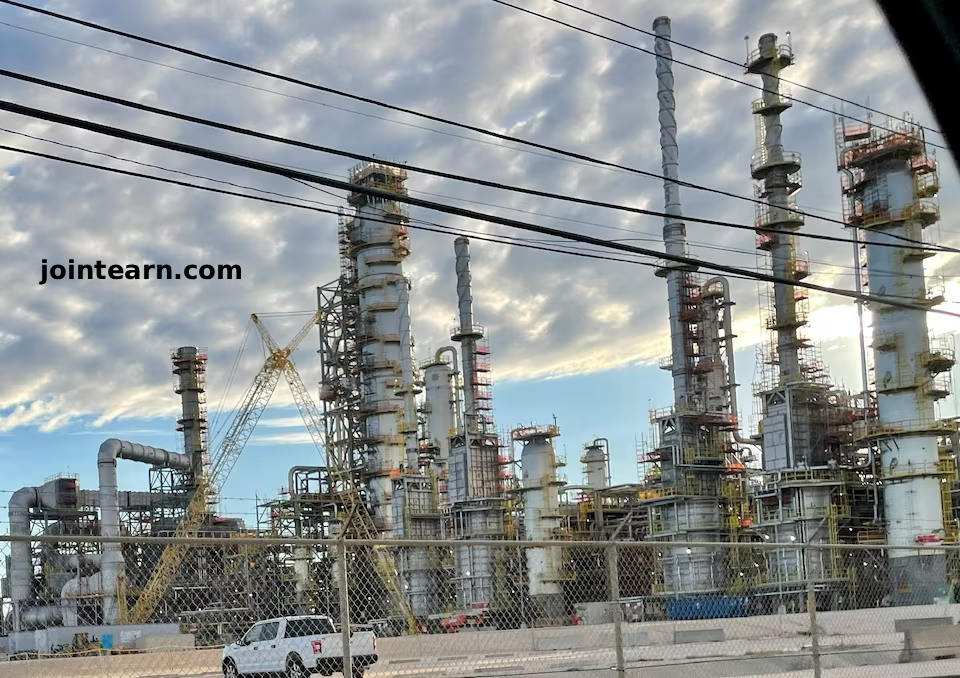
Big Oil Braces for Modest Q3 Gains While Analysts Turn Focus Toward 2026 Energy Market Outlook
HOUSTON/LONDON, Oct 29, 2025 — The world’s largest oil and gas companies — including Exxon Mobil, Chevron, Shell, TotalEnergies, and BP — are expected to post slightly higher third-quarter earnings as refining margins strengthen and oil prices stabilize, according to industry analysts. However, much of Wall Street’s attention is shifting toward how these energy giants plan to position themselves for 2026, amid trade tensions, oversupply risks, and the growing impact of AI-driven energy demand.
After a year marked by volatile crude markets and aggressive OPEC+ production increases, analysts believe third-quarter results will show a moderate recovery following four consecutive quarters of declining profits.
European Energy Majors to Kick Off Earnings Season
Shell (SHEL.L) and TotalEnergies (TTEF.PA) will open the earnings season on Thursday, with analysts forecasting 18% and 11% quarter-over-quarter increases in adjusted net income, respectively, according to LSEG estimates.
Despite the uptick, both companies’ results remain lower than a year earlier due to weak natural gas prices and trade disruptions linked to tariffs and geopolitical tensions.
“Greater focus will be placed on the early 2026 outlook,” said Barclays analyst Betty Jiang, noting that investors are increasingly concerned about tariff-related cost pressures and how rising AI data center energy demand could reshape the gas market.
TotalEnergies, which saw its debt surge 89% in the first half of 2025, is under particular scrutiny. The French oil major recently pledged to cut buybacks, trim capital expenditures, and sell mature hydrocarbon assets to manage leverage, but investor confidence remains cautious amid expectations of lower commodity prices in 2026.
U.S. Oil Giants Exxon and Chevron Under Investor Microscope
Exxon Mobil (XOM.N) and Chevron (CVX.N) are set to report results on Friday, with analysts predicting the two will leverage stronger refining performance to offset weaker upstream margins.
Chevron, which completed its $55 billion acquisition of Hess in July, is expected to report $3.4 billion in adjusted profit ($1.71 per share). Analysts are particularly focused on integration progress and cost synergies from the Hess merger.
“The results and subsequent call will likely be used to tease out answers on key integration issues and capital allocation strategy,” said RBC Capital Markets analyst Biraj Borkhataria.
Chevron has indicated that Hess will contribute $50 million–$150 million in adjusted earnings, excluding transaction costs. Investors are also anticipating more detailed guidance during the November 12 investor day.
Meanwhile, Exxon Mobil is projected to see earnings boosted by up to $700 million from stronger refining margins compared to the previous quarter. Analysts at TD Cowen expect Exxon to signal a reduction in early-stage capital spending, currently around $2.5 billion annually, as it prioritizes acquisitions and high-return projects.
Exxon executives are likely to face questions about merger and acquisition opportunities, particularly in the renewable and carbon capture segments, during their conference call.
BP Faces Investor Scrutiny Over Castrol Sale and Profit Decline
BP (BP.L) will report third-quarter results on November 4, with net profit forecasted to decline 10% year-over-year to just above $2 billion, per LSEG data.
However, analysts expect the drop to be cushioned by robust refining margins and stronger performance in the customers and products division, where operating profit is projected to soar by over 300% compared to last quarter.
Investors will also look for updates on BP’s planned sale of its Castrol lubricants business, part of a broader divestment strategy designed to strengthen the company’s balance sheet and improve shareholder returns.
Market Dynamics: OPEC+, Energy Demand, and 2026 Projections
Oil producers continue to face a complex environment as OPEC+ output rises and global demand growth slows. The International Energy Agency (IEA) forecasts a 4 million barrels per day surplus in 2026, raising concerns about sustained price weakness.
During the third quarter, Brent crude averaged 2% higher than Q2, but remained 13% lower than a year ago, while U.S. natural gas prices dropped 12% year-on-year.
These trends, coupled with ongoing tariffs and trade frictions, have prompted oil companies to adopt a more defensive financial stance, focusing on debt reduction, operational efficiency, and asset optimization ahead of what many analysts expect to be a challenging 2026.
Investor Sentiment: Looking Beyond 2025 Earnings
While short-term results are expected to show modest improvements, the broader question remains how Big Oil will adapt to a shifting landscape defined by low-carbon energy investment, slower demand growth, and increasing regulatory pressure in key markets.
“Investors are less concerned with this quarter’s profit numbers and more focused on how these companies are positioning for the energy transition and navigating pricing uncertainty into 2026,” said Sheila Dang, an energy markets analyst based in Houston.
Leave a Reply